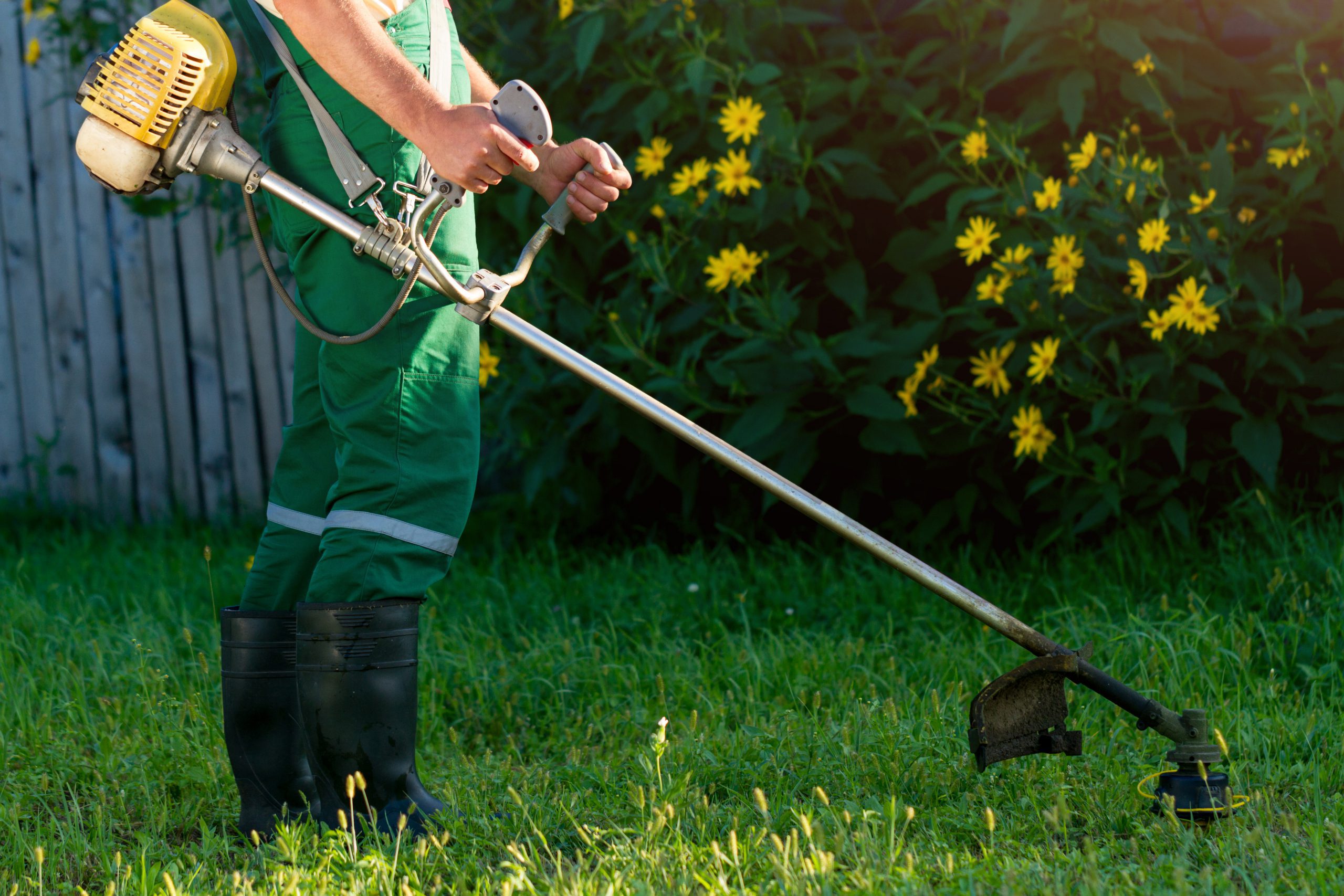Identify grassy weeds like crabgrass, annual bluegrass, and quackgrass by observing growth patterns, blade characteristics, and root systems. Use cultural practices like proper mowing at 2.5-3.5 inches, deep irrigation, and aeration to promote healthy turf. Implement pre-emergent herbicides before germination and post-emergent ones for existing infestations. Hand-pulling is effective for small outbreaks, while regular monitoring and maintenance keep lawns resilient. Uncover more about managing these pesky invaders effectively for a flawless lawn.
What Are Grassy Weeds and Why They Matter
Grassy weeds, often mistaken for turfgrass, are invasive species that undermine lawn quality by aggressively competing for essential resources like nutrients, water, and sunlight.
These undesirable plants, such as crabgrass and annual bluegrass, thrive in stressed lawns, forming dense patches that outcompete desired grasses. Their rapid growth and ability to produce vast seed quantities make them formidable opponents.
Effective weed control requires understanding these plants’ biology.
Employing cultural practices like proper mowing and regular aeration strengthens your lawn’s resilience.
Strategic herbicide applications, both pre-emergent and post-emergent, are vital in managing infestations, safeguarding your lawn’s health and aesthetic appeal.
How to Identify Grassy Weeds in Your Lawn
To accurately identify grassy weeds in your lawn, focus on distinct growth patterns such as clumping or spreading low and wide.
Examine physical characteristics like blade width, color, and texture; for instance, wider blades or unusual colors can signal a weed presence.
Perform a tug test to assess root systems, as weeds often have shallower roots that detach easily compared to desirable turfgrass.
Look at Growth Patterns and Texture
When trying to identify grassy weeds in your lawn, consider the growth patterns and texture as essential indicators. Grassy weeds often exhibit distinct growth patterns by growing in clumps or spreading low and wide, unlike the uniform spread of turfgrass.
To identify weeds, observe the texture differences: weeds may have wider or shinier leaves, with specific blade shapes, such as Annual Bluegrass’s boat-shaped tip. Conduct a tug test to analyze root systems, as weeds typically feature shallow roots.
Rapid regrowth after mowing also signals their presence. These characteristics help in distinguishing invasive weeds from your desirable lawn grasses.
Blade Width, Color, and Speed of Growth
Although identifying grassy weeds in your lawn can seem challenging, focusing on blade width, color, and growth speed provides essential clues.
Examine the blade width; weeds like Crabgrass often display wider blades compared to typical turfgrass. Observe the color, as weeds may exhibit shinier or unusual hues.
The speed of growth is another indicator; weeds usually grow faster than desirable grass, with noticeable surges post-mowing. For instance, Annual Bluegrass quickly reveals its presence with its accelerated growth and distinct boat-shaped tips.
Try the Tug Test and Examine Root Systems
Identifying grassy weeds in your lawn involves a more hands-on approach beyond mere visual cues like blade width and growth speed.
Conduct the tug test by gently pulling on suspected weeds. If they uproot easily with shallow root systems, they’re likely grassy weeds. In contrast, desirable turfgrass usually features deeper, more robust roots, resisting easy removal.
Furthermore, observe the growth pattern; weeds often grow in clumps or spread low and wide.
Examine blade characteristics for distinguishing features, such as the boat-shaped tip of Poa annua. This scientific approach provides clarity, aiding in effective lawn management and weed control strategies.
Common Types of Grassy Weeds and What They Look Like
When identifying grassy weeds, it’s essential to recognize key species such as Annual Bluegrass, Crabgrass, and Creeping Bentgrass by their distinctive morphological characteristics.
Annual Bluegrass, for example, is known for its boat-shaped leaf tips and preference for cool, moist environments, while Crabgrass exhibits coarse-textured, light green leaves that spread horizontally.
Furthermore, species like Quackgrass and Goosegrass can be identified by their rhizomatous root systems and dense growth patterns, which often outcompete desirable turf.
Annual Bluegrass (Poa annua)
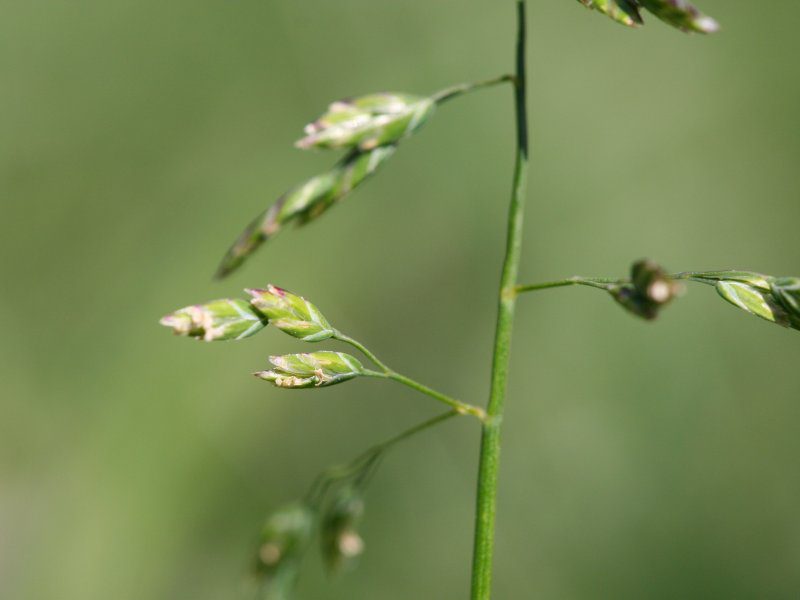
Annual bluegrass, scientifically known as Poa annua, is a pervasive grassy weed that presents challenges due to its resemblance to lawn grasses. It thrives in cool, moist climates, forming shallow-rooted clumps that reach 4 to 8 inches.
Recognize it by its boat-shaped leaf tips and light green hue. This weed completes its life cycle in a single season, germinating in fall and flowering by spring. Annual bluegrass produces numerous seeds, aiding its rapid spread.
Effective weed control involves minimizing moisture and shade, paired with selective herbicides during active growth. Understanding these characteristics is essential for successful management.
Crabgrass
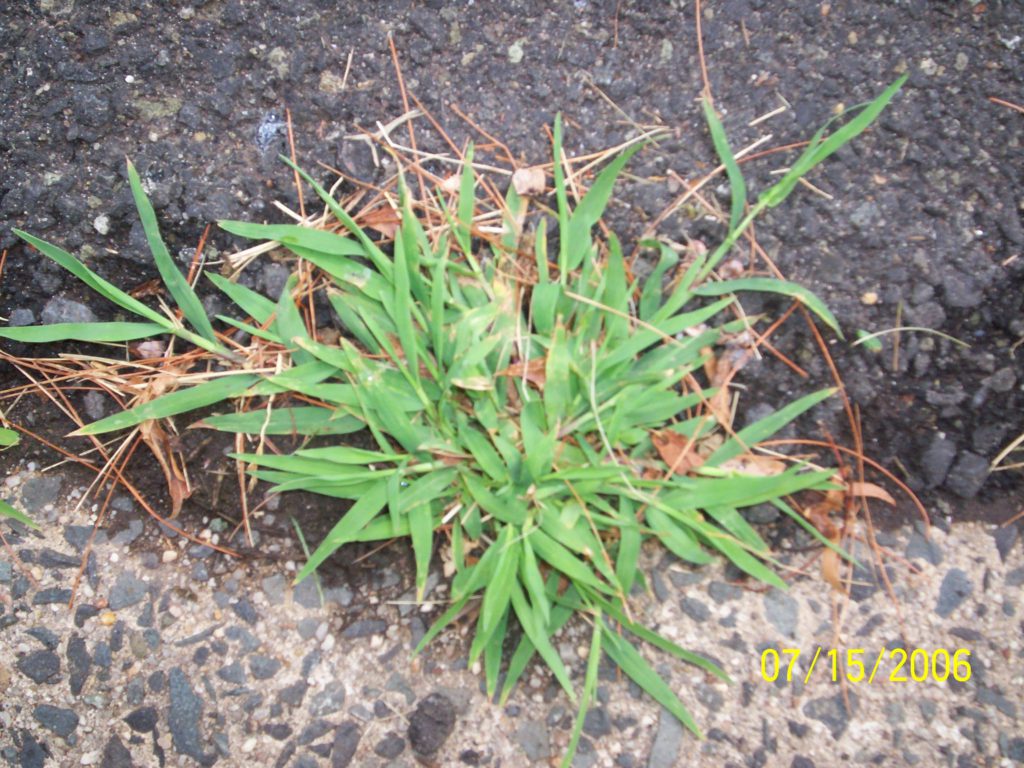
After understanding the characteristics and control measures for Annual Bluegrass, it’s important to examine another pervasive grassy weed: crabgrass.
Crabgrass, particularly smooth (Digitaria ischaemum) and large crabgrass (D. sanguinalis), germinates in mid-to-late spring as a warm-season annual. It reaches about four inches in height, featuring light green, coarse-textured leaves, easily distinguishing it from desirable turfgrass.
Importantly, a single plant can produce over 100,000 seeds, persisting in soil for years. For effective weed control, hand-pull young plants and apply selective herbicides before seeding, targeting dense, spreading patches, especially in neglected lawn areas during summer months.
Creeping Bentgrass
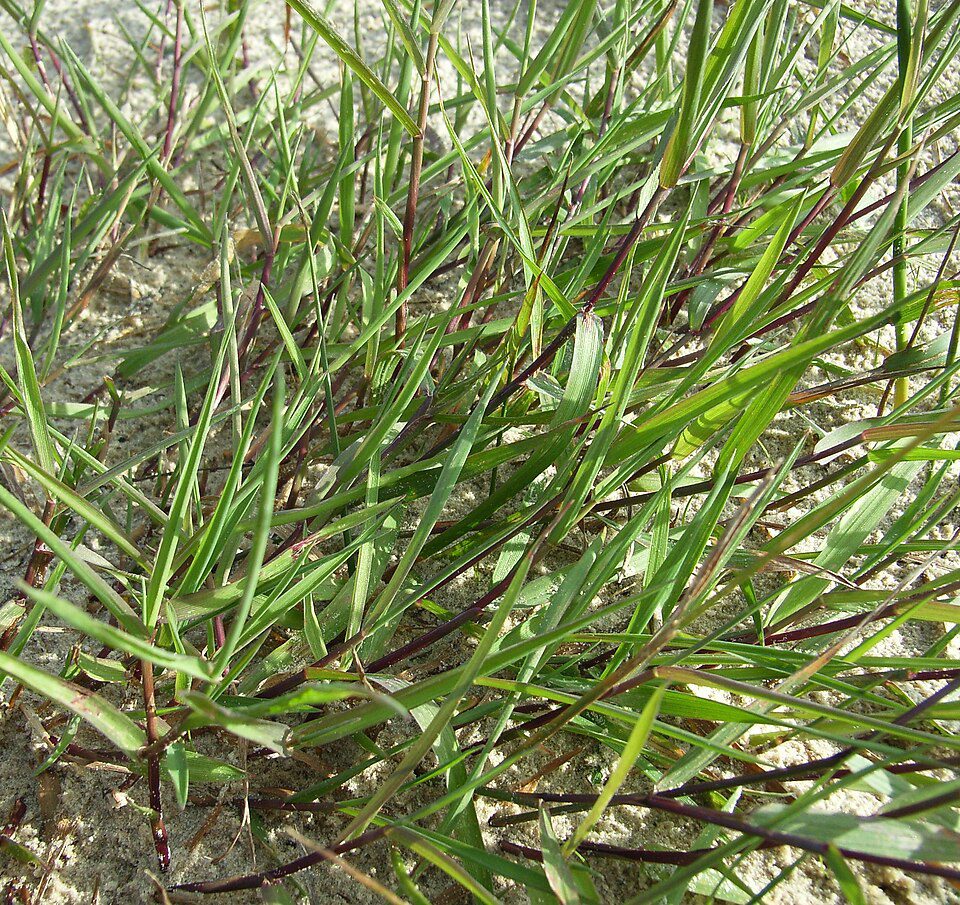
Creeping bentgrass, scientifically known as Agrostis stolonifera, poses a significant challenge in lawn management due to its ability to form dense mats in cool, moist regions.
This warm-season perennial spreads through both seeds and stolons, allowing it to outcompete desirable turf grasses, especially in poor soil conditions. The horizontal stems can extend up to 40 inches, making control of this grassy weed essential.
Its seeds can remain viable for four years, complicating eradication efforts.
Utilize early intervention strategies, such as pre-emergent herbicides, to prevent germination, and maintain healthy lawn practices to minimize the spread of creeping bentgrass effectively.
Quackgrass
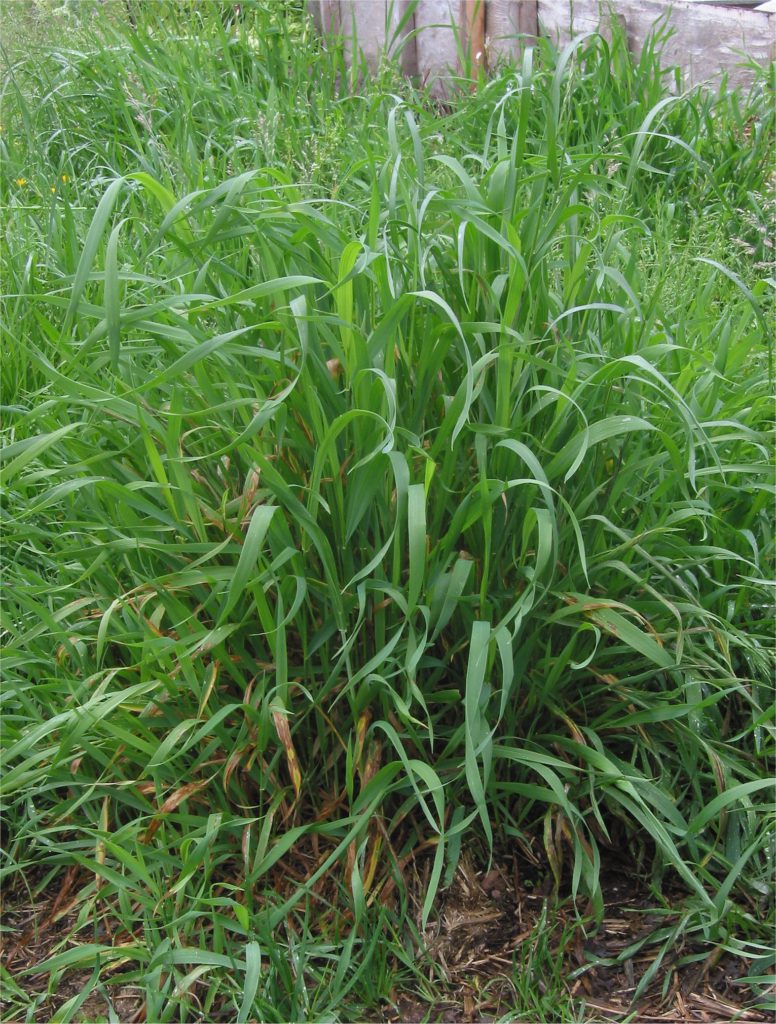
While managing grassy weeds like creeping bentgrass, it’s crucial to also address the pervasive issue of quackgrass.
Quackgrass, or Elymus repens, is a perennial invasive species with an extensive rhizomatous root system, allowing it to form dense patches in your lawn. It can grow up to 4 feet tall, with narrow, flat blades that appear coarser than desired turfgrass.
This adaptable weed thrives in disturbed soils and competes fiercely for nutrients and water.
Effective weed control requires either physically removing roots and rhizomes or applying selective herbicides targeting grassy weeds, ensuring your lawn remains healthy and quackgrass-free.
Goosegrass & Foxtails
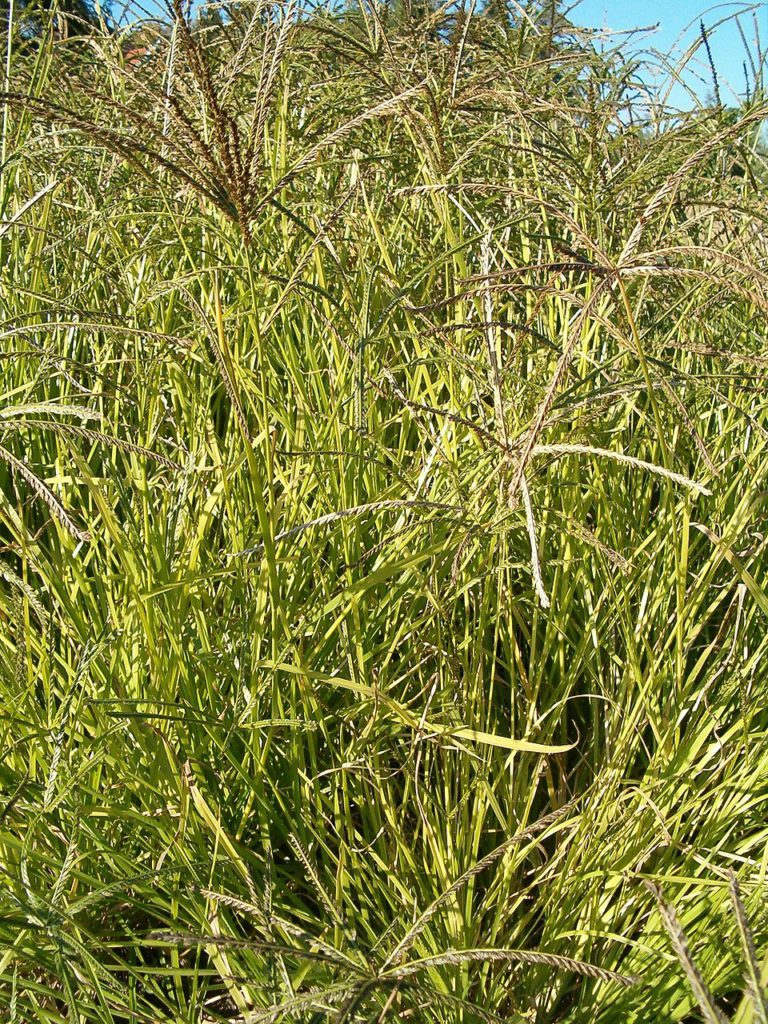
When managing your lawn, it is crucial to recognize and control common grassy weeds like goosegrass and foxtails, as they can quickly disrupt the aesthetic and health of your turf. Goosegrass (Eleusine indica) displays flat, grayish-green blades, thriving in compacted soils. In contrast, green foxtail (Setaria viridis) features narrow, hairy leaves and fluffy seed heads. Both species reproduce rapidly, requiring swift intervention.
| Weed Type | Characteristics | Growth Conditions |
|---|---|---|
| Goosegrass | Flat, grayish-green blades | Compacted, warm areas |
| Green Foxtail | Narrow, hairy leaves, fluffy heads | Spring, nutrient-rich areas |
Understanding these traits aids in effective management.
How to Get Rid of Grassy Weeds Without Damaging Turfgrass
To effectively manage grassy weeds without harming your turfgrass, integrate cultural controls like precise mowing, strategic aeration, and proper irrigation to enhance lawn health.
Apply pre-emergent herbicides to inhibit weed germination before they sprout, ensuring careful timing and adherence to label instructions.
For existing infestations, use selective post-emergent herbicides to target weeds specifically, maintaining the integrity of your desirable turfgrass.
Cultural Control: Mowing, Aeration, Irrigation
Integrating cultural control methods such as mowing, aeration, and irrigation into your lawn care routine can greatly reduce the presence of grassy weeds without harming your turfgrass.
Mowing at a height of 2.5 to 3.5 inches fosters dense grass growth, effectively shading out weed competitors. Proper irrigation, involving deep and infrequent watering, encourages robust root systems that outcompete weeds by accessing deeper moisture reserves.
Aeration alleviates soil compaction, promoting deeper root growth and enhancing nutrient uptake. By maintaining these practices, you create an environment where turfgrass thrives, reducing the likelihood of grassy weeds establishing and spreading across your lawn.
Pre-Emergent Herbicides: Stop Weeds Before They Sprout
Pre-emergent herbicides serve as a proactive solution to halt grassy weeds like crabgrass and annual bluegrass before they even sprout. By forming a chemical barrier in the soil, these herbicides prevent weed seed germination.
Timing is critical; apply them several weeks before the expected germination period, usually mid-to-late spring. Ideal soil temperatures range from 50°F to 65°F, signaling the right conditions for weed seeds to germinate.
Reapplication may be necessary after heavy rain. Choose herbicides formulated for lawns and follow instructions to avoid turfgrass damage. This scientific approach guarantees effective grassy weed control without harming your lawn.
Post-Emergent Herbicides: Targeting Existing Infestations
When dealing with existing grassy weed infestations, post-emergent herbicides are your go-to solution for precise control. These specialized formulations target unwanted species without harming your turfgrass.
Timing is essential; apply when weeds are actively growing, typically from late spring to early summer, to maximize effectiveness. Opt for selective post-emergent herbicides designed for specific grassy weeds, ensuring targeted weed control while maintaining lawn aesthetics.
Carefully follow label instructions on application rates and safety precautions. Spot-treat infestations to manage localized issues, preserving overall lawn health and minimizing the need for broad treatments.
This method enhances weed control efficiency and lawn integrity.
Long-Term Strategies to Prevent Grassy Weed Comebacks
To effectively prevent grassy weed comebacks, it’s crucial to adopt a multi-faceted approach tailored to maintaining a robust and resilient lawn.
Regular lawn maintenance, including mowing at the ideal height, encourages dense turf that can outcompete lawn weeds for essential resources.
Implement aeration and overseeding to enhance soil health, thereby reducing the ability of weeds to establish.
Proper irrigation techniques, such as deep watering, maintain soil moisture conducive to grass growth.
Conduct soil tests to determine nutrient levels, facilitating targeted fertilization.
Integrate pest management strategies by blending cultural practices with selective herbicide use to prevent weeds without compromising lawn integrity.
Still Dealing with Grassy Weeds? LawnGuru Can Help
A thorough lawn care plan can greatly reduce grassy weed issues, yet these persistent invaders sometimes still find their way into even the best-maintained lawns. LawnGuru offers precise weed control solutions, focusing on identification and management of grassy weeds like crabgrass and annual bluegrass. With expert advice on integrated pest management and timing of herbicide applications, LawnGuru helps you maintain a competitive, healthy lawn.
| Task | Methodology | Timing |
|---|---|---|
| Identify Grassy Weeds | Tug Test, Visual Check | Early Detection |
| Apply Pre-emergents | Chemical Prevention | Weeks Before Germination |
| Regular Maintenance | Aeration, Overseeding | Consistent, Year-Round |



